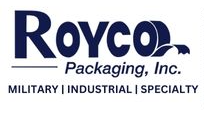Packaging plays a crucial role in preserving the quality, freshness, and integrity of various products. When it comes to securing packages, heat seal and cold seal packaging are two popular methods employed in different industries. Heat seal packaging involves the use of heat to create a secure bond between packaging materials, while cold seal packaging relies on pressure and adhesion without the need for heat. In this post, we will delve into the world of heat seal packaging, exploring its advantages, drawbacks, and how it compares to cold seal packaging. By understanding the unique characteristics of each method, businesses can make informed decisions about the most suitable packaging solution for their products.
Advantages of Heat Seal Packaging
Heat seal packaging offers several advantages that make it a preferred choice for many industries:
- Strong and Secure Sealing: Heat seal packaging creates a robust, airtight seal that provides excellent product protection. The heat applied during sealing melts the packaging material, bonding it together firmly, preventing leakage, and maintaining product freshness.
- Versatility: Heat seal packaging is compatible with a wide range of packaging materials, including plastics, foils, laminates, and papers. This versatility allows businesses to choose the most suitable packaging material for their specific product requirements.
- Customization Options: Heat seal packaging offers opportunities for customization, such as incorporating branding elements, product information, or promotional messages directly onto the packaging. This ability to enhance visual appeal and brand recognition can contribute to increased product visibility and consumer engagement.
- Efficiency and Speed: Heat seal packaging machines are designed for high-speed production lines, offering rapid sealing capabilities. This efficiency can improve overall production output and reduce packaging time, leading to increased operational efficiency.
Drawbacks of Heat Seal Packaging
While heat seal packaging has numerous advantages, it is important to consider its potential drawbacks:
- Equipment and Energy Requirements: Heat seal packaging requires specialized equipment such as heat sealers or heat sealing machines, which can represent a significant investment for businesses. Additionally, the use of heat in the sealing process requires a reliable source of energy, usually electricity or gas, which adds to operational costs.
- Material Compatibility: Heat seal packaging is highly dependent on the compatibility between the packaging material and the heat sealing process. Certain materials may not withstand the heat required for sealing, leading to issues such as melting, warping, or compromised product integrity. It is crucial to carefully select packaging materials that are suitable for heat sealing to ensure optimal results.
- Limited Reparability: Once a heat seal is created, it is challenging to repair or reopen the package without compromising its integrity. This can be a drawback in situations where the package needs to be resealed or accessed multiple times, such as in the case of resealable or reusable packaging.
Cold Seal Packaging: A Comparative Analysis
Cold seal packaging, also known as self-seal packaging or pressure-sensitive packaging, differs from heat seal packaging in several ways. It relies on pressure and adhesion to create a secure seal without the need for heat. Here's a comparative analysis of cold seal packaging in relation to heat seal packaging:
- Material Compatibility: Cold seal packaging offers greater flexibility in terms of material compatibility compared to heat seal packaging. It can be used with a wide range of materials, including papers, films, and laminates, without concerns about material melting or warping.
- Energy Efficiency: Unlike heat seal packaging, cold seal packaging does not require external heat sources, making it more energy-efficient. This can result in cost savings and reduced environmental impact.
- Reparability and Reusability: Cold seal packaging offers the advantage of resealability and reusability. The pressure-sensitive adhesive allows the package to be opened and resealed multiple times without compromising the seal or the packaging material. This feature can be particularly beneficial for products that require frequent access or portion control.
- Longer Sealing Times: Cold seal packaging generally requires longer sealing times compared to heat seal packaging. The pressure applied during the sealing process needs sufficient time to activate the adhesive and create a secure bond. This can impact production speed and efficiency, especially in high-volume manufacturing environments.
- Sensitivity to Temperature and Humidity: Cold seal packaging is more sensitive to temperature and humidity conditions during the sealing process. Extreme temperatures or high humidity levels can affect the adhesive properties, leading to inconsistent sealing results. It is important to consider environmental conditions and ensure proper storage and handling of cold seal materials.
Conclusion
In the debate between heat seal and cold seal packaging, there is no one-size-fits-all answer. The choice between the two methods depends on various factors, including product characteristics, material compatibility, production requirements, and budget considerations. Heat seal packaging offers strong and secure sealing, versatility, and customization options, but requires specialized equipment and has limitations in terms of material compatibility and reparability. On the other hand, cold seal packaging offers material flexibility, reusability, and energy efficiency, but may require longer sealing times and can be sensitive to temperature and humidity. Ultimately, businesses should evaluate their specific packaging needs and conduct thorough testing to determine the most suitable packaging method that ensures product integrity, meets production requirements, and aligns with their overall business goals.

